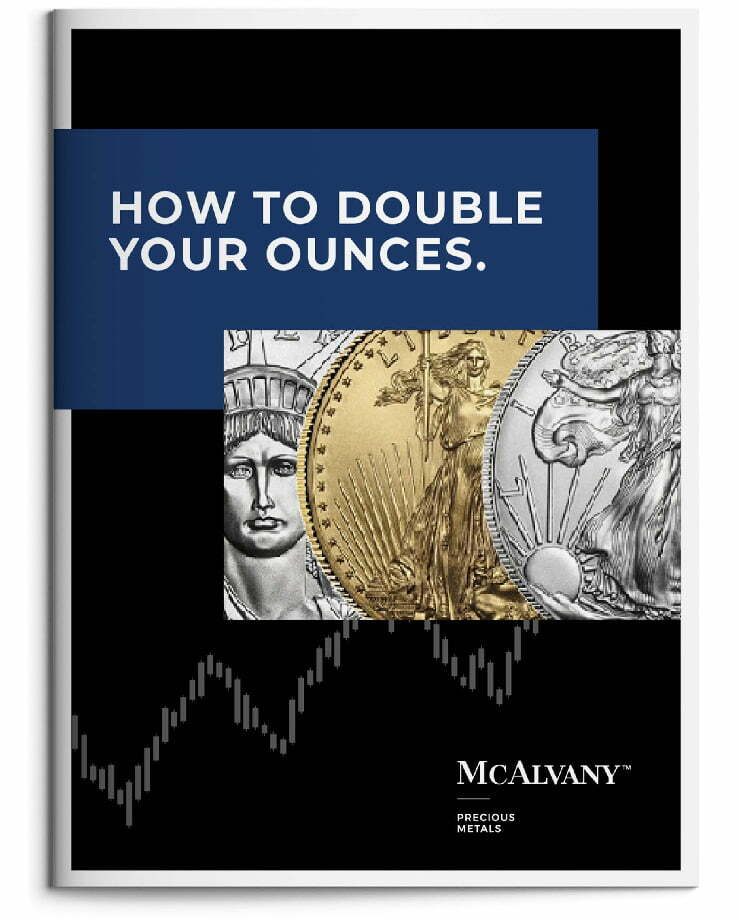Let The Thesis Play Out
This week, HAI will be quick. There’s just not much to add to the commentary of recent weeks. In HAI‘s view, the Fed is trapped between an inflation problem and a serious Federal government debt and deficit problem. The Fed seemingly can’t raise rates further to effectively fight inflation (because the resulting weakened economy would hit tax receipts just as the increase in rates would spike interest expenses—threatening a debt-spiral), and the Fed can’t easily cut rates to ease the debt and deficit problem without stoking the inflation fire.
In short, whatever the Fed does now, it seriously risks either exacerbating a ruinous federal government debt spiral dynamic or significantly exacerbating an inflation problem that has already run well above target for four years and five months. For the Fed, it’s not a pretty pickle. At next Wednesday’s FOMC meeting, Jay Powell and the Fed will have to pick their poison.
Last week, HAI commented that “growing signs of weakness in the labor market have provided an exceptionally bullied Fed with the cover necessary to cut rates and pick inflation as its poison.” This week, additional weak labor market data confirmed the softening labor market trend and further confirmed what now seems to be an inevitable and imminent (inflationary) rate-cutting cycle ahead despite still-elevated inflation.
The big bomb of the week came on Tuesday when the Bureau of Labor Statistics (BLS) suggested that the U.S. economy created a whopping 911,000 fewer jobs in the 12 months through March than previously reported. The record negative preliminary annual benchmark revision estimate to the closely watched non-farm payrolls data further confirms what we already know—the labor market has been far weaker than advertised.
Later in the week, initial jobless claims also added to the rapidly growing mountain of evidence pointing toward a weak labor market. Consistent with a material softening in the labor market, initial claims for state unemployment benefits jumped sharply by 27,000 this week to a seasonally adjusted 263,000 versus economists’ forecasts for 235,000 claims.
Adding to the rapidly weakening labor market tea leaves, this week’s National Federation of Independent Business’s (NFIB) small business report confirmed that small business job openings fell to the lowest level since the pandemic-distorted July 2020. Tellingly, referring to a fundamental job market softening, NFIB Chief Economist Bill Dunkelberg reported that, “unfilled job openings are disappearing, but not because they are filled.”
On the heels of news last Friday that job growth nearly stalled in August and that the economy actually lost jobs in June for the first time in four and a half years, this week’s confirmation of a much-weaker-than-assumed labor market gave the Fed all the cover it needs to cut rates next week, and also cut at both the October and December FOMC meetings later his year.
That said, inflation data wasn’t nearly so conclusive in arguing for a Fed rate cut. As previously mentioned, the Fed has failed to keep inflation at or below its 2% target for an increasingly embarrassing nearly four and a half years. While this week we learned that U.S. producer prices (PPI) unexpectedly dropped by 0.1% last month, that was after a red-hot (even after being downwardly revised) 0.7% jump in July.
Furthermore, U.S. consumer prices (CPI) rose more than expected in August by 0.4% last month (vs. 0.3% expected) after increasing 0.2% in July. The Bureau of Labor Statistics reported that year-over-year (Y/Y) CPI advanced 2.9% for the largest Y/Y increase in seven months, after climbing 2.7% in July.
Again, the bottom line is that though the inflation data argues strongly against rate cuts, the jobs data argues for cuts. However, in HAI‘s view, it’s the government fiscal crisis that demands cuts, regardless of any other consideration.
The mainstream market narrative is still well behind the curve as to what is really happening with regard to government policy, debt, inflation, and gold. Consider what Jason Thomas, the head of global research and investment strategy at Carlyle, said in a Bloomberg article this week. Thomas said, “Bondholders want to be convinced that the Fed’s job is to preserve the real value of their principal. If instead they feel the Fed is more focused on government finance, you could see a bond selloff and higher term premiums.”
In HAI‘s view, the real value of bondholder principle has already been targeted for sacrifice. The U.S. government can either inflate that real value of debt away and survive, or it can preserve the real value of bondholder principle and default sooner rather than later. Given the two options, the U.S. government seems overwhelmingly likely to inflate those debt obligations away and avoid insolvency risk.
That likely means cutting interest rates, running inflation hot, inflating away the net present value of debt, and implementing some form of yield curve control operation to suppress interest expenses when the bond market would otherwise revolt.
This week, Mr. DOGE himself, Elon Musk, confirmed in a tweet that we need an X factor to save us from our debt crisis. As he said, “I haven’t been to DC since May. The government is basically unfixable… At the end of the day if you look at our national debt…if AI and robots don’t solve our national debt, we’re toast.”
Well, in this author’s view, AI and robots aren’t at all likely to solve our national debt problem any time soon (just like DOGE didn’t). Investors would be wise to anticipate the full force of an inflate-the-debt-away campaign—and that may be starting as early as next week’s FOMC meeting.
If one knows where to look, the evidence is plain to see. According to Aakash Doshi of State Street Investment Management, “gold is a risk-hedging, diversifying asset” that is more sensitive to rising risks (particularly fiscal and monetary risks) than larger, more liquid assets such as stocks and bonds. “Gold is flagging a risk about US debt and the US dollar that other assets are not.”
Gold’s relentless surge from $2,000 to more than $3,500 in a year and a half is, in HAI‘s view, early market pricing confirmation that the inflate-the-debt-away playbook is a fait accompli and that long-term bonds are as good as certificates of confiscation until further notice.
The Western investor, broadly, is still behind the curve and playing by the old rules. However, a rapidly growing minority of investors is clearly starting to embrace gold and the new rules as they see the inflate-the-debt-away writing on the wall. Importantly, there is also growing evidence that those investors are increasingly concluding that the gold price will be sustained at high levels. The miners were somewhat lethargic in the early innings of the 2024 rally in the gold price. Investors were valuing mining stocks on the assumption that gold’s pop higher would be short-lived. This year, gold mining stocks are at the top of the list of best performing sectors in the market. The miners’ share prices are now starting to discount expectations for higher gold prices years into the future.
In HAI‘s view, the bull market is proving itself. What was argument several years ago is now being confirmed in price action. Expect volatility, but, in HAI‘s view, also expect a significant upside price appreciation bias for the sector over time as this bull market plays out. Fundamentally, the thesis has come together. Now, HAI suggests patiently letting that thesis play.
Weekly performance: The S&P 500 was up 1.59%. Gold was up 1.39%, silver gained 2.93%, platinum gained 1.45%, and palladium was up 8.77%. The HUI gold miners index gained 4.06%. The IFRA iShares US Infrastructure ETF was off 0.13%. Energy commodities were volatile and mixed on the week. WTI crude oil gained 1.10%, while natural gas was down 3.04%. The CRB Commodity Index was up 1.33%. Copper was up 2.49%. The Dow Jones US Specialty Real Estate Investment Trust Index was up 0.47%. The Vanguard Utilities ETF was up 2.26%. The dollar index was nearly flat, down 0.16% to close the week at 97.61. The yield on the 10-yr U.S. Treasury was down 1 bp to close the week at 4.07%.
Have a wonderful weekend!
Best Regards,
Morgan Lewis
Investment Strategist & Co-Portfolio Manager
MWM LLC















